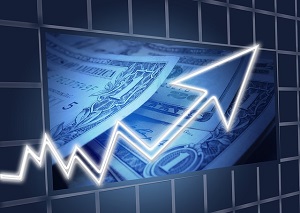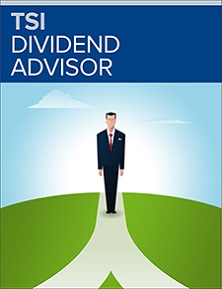Topic: Dividend Stocks
Stock buybacks can increase shareholder value as much or more than dividends
Investors can profit from companies that aim to increase shareholder value through stock buybacks—as well as with dividends
While investors increasingly seek out cash dividends, few are as excited about stock buybacks. Dividends are in fashion with investors right now, and that’s always a good thing. After all, creative accounting can produce false impressions of prosperity and hide embarrassing financial problems. But accounting can’t create cash for this year’s dividend, let alone conjure up a history of past dividends. Stick to dividend payers and you’ll avoid most of the market’s greatest disasters. But you should also consider stock buybacks.
In many ways, stock buybacks, or share repurchases, are better than dividends. In particular, stock buybacks give you a tax-deferral option that you don’t get with cash dividends.
 The Growing Power of DividendsLearn everything you need to know in '7 Winning Strategies for Dividend Investors' for FREE from The Successful Investor. The Best Canadian Dividend Stocks to Buy: REITS Canada and other Top Canadian Dividend Stocks. |
Stock buybacks raise the value of a given stock holding in two ways:
- First, stock buybacks raise a company’s earnings per share. It’s simple arithmetic: buybacks reduce the number of shares outstanding. To get earnings per share, you divide total earnings by the number of shares outstanding. When you reduce the divisor—because the company has fewer shares outstanding, due to stock buybacks—the calculation gives you a higher number for earnings per share as an answer. On the whole, buyers are willing to pay slightly more for a stock with slightly higher earnings per share.
- Second, when the company engages in stock buybacks, it bids up the price of the stock.
When you hold a stock in your personal, taxable account and it pays a cash dividend, you have to pay tax on the dividend in the year in which you receive it. If the company instead devotes the cash to a stock buybacks, you have two options:
- If you need cash, you can sell part of your holding in the stock, presumably at a higher price than you’d get in the absence of stock buybacks. If you do that, you’ll only pay taxes on the sale if the stock has moved up since you bought (outside of an RRSP). If the stock has moved sideways or down, the proceeds of your sale are tax-free.
- Of course, you’ll always have the option of holding on to your stock until it suits your purposes to sell. With stock buybacks, that lets you defer taxes on capital gains.
This added opportunity for tax deferral may not seem like much of an advantage in any single year. However, the magic of compound interest applies to that tax deferral. It can add up to a huge advantage over a decade or two.
The advantage of stock buybacks expands all the more if you hold off on selling until you need the money. That holding period may last until you retire, when your income tax rate is likely to be lower.
The funny thing is that, just as investors tend to underestimate the value of a stock buybacks, they overestimate the value of a dividend reinvestment program. They put a high value on the fact that they can reinvest their dividends automatically, without paying brokerage commissions. They fail to recognize that brokerage commissions are now at historic lows. They also overlook the fact that they have to pay taxes on the full dividend, even if they reinvest it. That tax hit and the loss of an opportunity for tax-deferred compounding greatly outweigh what they save on brokerage commissions.
Don’t get us wrong—cash dividends are a definite plus. But you still need to follow the three key guidelines in our Successful Investor approach to sound investing:
Invest mainly in well-established companies, since they are the companies most likely to keep making, if not increasing, those dividend payments each year.
Spread your portfolio out across the five main economic sectors: Manufacturing & Industry, Resources & Commodities, Consumer, Finance and Utilities. That way, you increase your chances of stumbling on a super stock that goes up five to 10 or more times faster than average. A few of these can make an enormous improvement in your long-term investment results.
You also need to limit your exposure to stocks that are in the broker/media limelight. That limelight bloats investor expectations. When stocks fail to live up to those expectations, big downturns often follow, regardless of a company’s dividend or stock buyback history.
Investor bonus: Real-world examples of increasing shareholder value
Canadian fertilizer maker and agricultural goods retailer Agrium Inc. (Toronto symbol AGU) announced that it was spending $900 million to stock buybacks, specifically to repurchase about 6% of its shares.
At the same time, Agrium pledged to double its dividend to $2 a share on an annualized basis and move from a semiannual to a quarterly payout. This increased their dividend yield 1.76%.
These moves were partly due to pressure from its largest shareholder, hedge fund Jana Partners LLC, which had been pushing the company to explore options to increase shareholder value.
Canadian National Railway Co. (Toronto symbol CNR) launched a program of stock buybacks. The plan included a buyback of up to 18 million of its common shares, or roughly 4% of the total outstanding.
These initiatives raised earnings per share and gave the remaining shareholders a larger stake in the company.
Shortly after they announced their buyback program CNR also rewarded its shareholders with a 15% increase in its quarterly dividend.
If you stick with our long-standing advice of investing mainly in well-established, dividend-paying companies with strong business prospects (like those we recommend in The Successful Investor), you will automatically earn regular dividend income. And you will also have an excellent chance of benefiting from companies that buy back their shares regularly.
Plus, the fact that these companies have strong positions in healthy industries makes it more likely that they will buy back shares on a regular basis, and raise their dividends.
Finding the right companies to buy
Every company will prioritize an increase in shareholder value differently. You can increase your chances by following these three Successful Investor rules:
Stop worrying about a high dividend yield
Investors should avoid judging a company based solely on its dividend yield (the percentage you get when you divide a company’s current yearly payment by its share price). That’s because high yield can sometimes be a danger sign rather than a bargain. For example, a dividend paying stock’s yield could be high simply because its share price has dropped sharply (because you use a company’s share price to calculate yield). The share price drop may very likely be because investors are anticipating a dividend cut.
A history of paying a dividend
One of the best ways to pick a stock that cares about its investors is to seek out ones that pay dividends. We like to take it a step further and look for companies that have been paying dividends for at least 5 to 10 years. Companies can trump up quarterly earnings and create press releases to appear to be making progress, but they cannot fake dividends. Dividends are cash outlays that an unsuccessful company could never produce. The longer they have been paying dividends the better chances that they may increase their dividend yield.
Invest in dividend stocks that dominate their market
In order for you to benefit from companies that periodically increase shareholder value, you need to find stocks that are paying a dividend but also those that dominate their industries. Besides brand recognition, major companies can influence legislation, industry trends, etc., to suit themselves. Minor firms can’t do that.
Has the fact that a company raised its dividend ever been the catalyst that prompted you to buy a stock? Has a company’s history of stock buybacks ever influenced your decision to buy a stock? In either case, did the stock meet your expectations?
This post was originally published in 2016 and is regularly updated.



